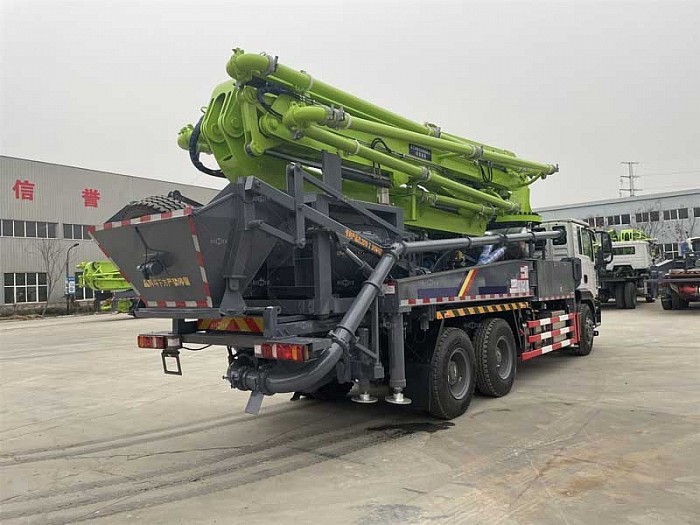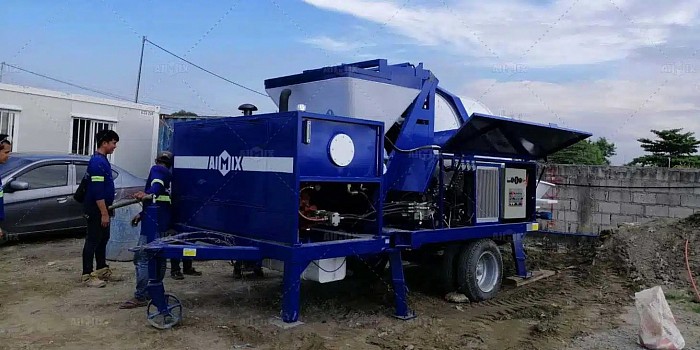Concrete Pumping: Understanding Horizontal Conveying Distances
Concrete pumping is a vital aspect of modern construction projects, facilitating the efficient placement of concrete in various locations, including those with challenging access. One crucial parameter to consider when planning concrete pumping operations is the maximum horizontal conveying distance achievable by a concrete pump. In this article, we delve into the intricacies of this concept, exploring its significance, factors influencing it, and strategies for maximizing it.
Understanding the Concept of Horizontal Conveying Distance
Definition and Importance
Horizontal conveying distance refers to the maximum horizontal span over which a concrete pump truck can transport concrete effectively without compromising its quality or performance. It is a critical parameter in construction projects where concrete needs to be delivered to distant or hard-to-reach areas, such as high-rise buildings, tunnels, and bridges. Understanding this concept is essential for ensuring the successful execution of concrete pumping operations and avoiding logistical challenges or delays.
Factors Influencing Horizontal Conveying Distance
Several factors influence the maximum horizontal conveying distance achievable by a concrete pump:
Pump Type and Capacity: Different types of concrete pumps, such as boom pumps, line pumps, and truck-mounted pumps, have varying capabilities in terms of horizontal reach. Additionally, the pump's capacity, expressed in terms of cubic meters per hour (m³/h), affects its ability to convey concrete over long distances.
Pipeline Length and Diameter: The length and diameter of the pipeline used for concrete pumping play a crucial role in determining the maximum horizontal conveying distance. Longer pipelines and larger diameters result in greater frictional resistance and pressure losses, limiting the achievable distance.
Concrete Mix Design: The characteristics of the concrete mix, including its slump, aggregate size, and consistency, influence its pumpability and flowability. Pumping mixes with high slump or excessive amounts of coarse aggregate may pose challenges over long distances due to increased friction and segregation.
Determining the Maximum Horizontal Conveying Distance of a Concrete Pump
Equipment Specifications and Limitations
Concrete pump manufacturers provide detailed specifications and performance data for their equipment, including maximum horizontal reach capabilities. These specifications consider factors such as pump type, hydraulic power, and pipeline configuration. Engineers and contractors must refer to these specifications when planning concrete pumping operations to ensure compliance with safety standards and operational limitations.
Practical Considerations for Long-distance Concrete Pumping
In addition to equipment specifications, several practical considerations influence the maximum horizontal conveying distance in real-world scenarios:
Site Conditions: Factors such as terrain elevation, obstructions, and access restrictions can impact the effective reach of a concrete mixer with pump. Site surveys and pre-planning are essential to identify potential obstacles and determine the most suitable pumping setup.
Pump Placement and Setup: Proper placement and setup of the concrete pump play a crucial role in maximizing horizontal conveying distance. Optimal positioning, stable support, and alignment with the pumping area are necessary to minimize pressure losses and ensure efficient concrete flow.
Strategies for Maximizing Horizontal Conveying Distance
Proper Equipment Selection and Maintenance
Selecting the right concrete pump and maintaining it in optimal condition are essential for achieving maximum horizontal conveying distance. Regular inspection, lubrication, and replacement of worn components, such as seals and hoses, help ensure smooth operation and minimize downtime. Additionally, investing in high-quality pump accessories, such as reducers and elbows, can reduce frictional losses and improve pumping efficiency over long distances.
Optimizing Concrete Mix Design and Pumping Techniques
The design of the concrete mix and the pumping techniques employed can significantly impact horizontal conveying distance. Engineers and concrete suppliers should collaborate to develop mixes with suitable rheological properties, such as adequate slump and workability, to facilitate pumpability over extended distances. Properly proportioned aggregates and admixtures can also enhance pumpability and reduce the risk of blockages or segregation during pumping.
In terms of pumping techniques, adopting continuous pumping methods, where feasible, can help maintain a consistent flow of concrete and minimize pressure fluctuations along the pipeline. Additionally, employing techniques such as pre-wetting the pipeline, using pumping aids, and adjusting pump settings based on the characteristics of the concrete mix can further optimize pumping efficiency and extend horizontal conveying distances. View more info here: https://aimixconcretesolution.com/concrete-pump/how-far/.
Conclusion
In conclusion, maximizing the horizontal conveying distance of a concrete pump requires careful consideration of various factors, including equipment specifications, site conditions, and pumping techniques. By selecting the right equipment, optimizing concrete mix designs, and implementing best practices in pumping operations, contractors and construction professionals can achieve efficient and cost-effective concrete placement over long distances. Ultimately, prioritizing safety, quality, and efficiency in concrete pumping operations contributes to the successful completion of construction projects and ensures the integrity and durability of concrete structures.


